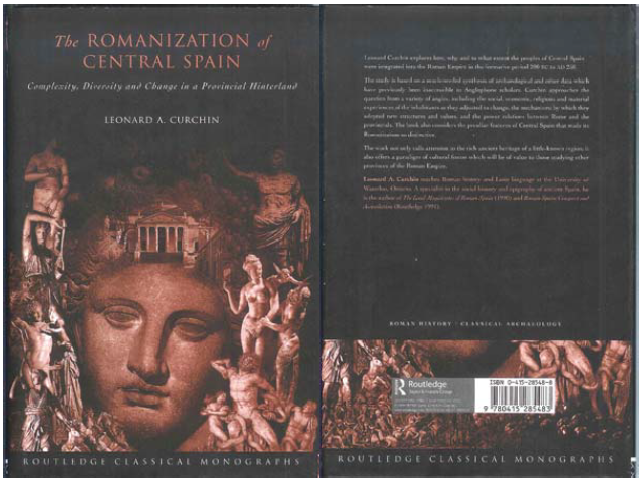Curchin, L.A. 2003. The Romanization of Central Spain. Complexity, diversity and change in a provincial hinterland. – London/New York, Routledge.
Abstract
Central Spain, the heartland of the Province Hispania Citerior, is the laboratory for Curchin to study the cultural transformation of six indigenous peoples, from the second century BC to the mid-third century AD. According to him, we can understand the working of the Roman empire by studying the changes in the behaviour of the indigenous peoples who lived in the study area. This extensive plateau of approximately 100,000 square kilometres is also known as Meseta, a term used by the famous German explorer and geographer Alexander von Humboldt. After a short introduction to the physical geography of the region, Curchin tries to develop, in the most theoretical part of the book, the model of Romanization that describes the best way in which the indigenous people were integrated into the Roman empire and adopted or adapted ‘Roman’ artifacts, structures and lifestyles. In his opinion the integration model gives the best insight into Romanization. In this model, the Roman and indigenous cultures “undergo a process of mutual permeation and amalgamation to form a new, ‘provincial’ culture”. Nevertheless “the model predicts that some elements of both constituent cultures will remain unabsorbed and unintegrated” (p. 14) Curchin adopted the eclectic method in using both processual and post-processual insights, in combination with archaeological, literary and epigraphic evidence, to illustrate how the transition from pre-Roman to Romanized culture took place. Read more...
Downloads




